#sephardic culture
Explore tagged Tumblr posts
Text

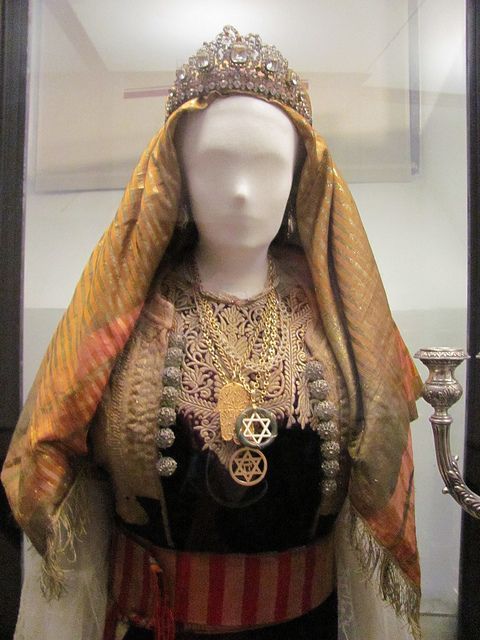
Sephardi bridal ensembles, displayed in the Quincentennial Foundation Museum of Turkish Jews (Istanbul) and the Synagogue of El Transito Museum (Toledo)
2K notes
·
View notes
Text
Universo cultural sefardí: tradición oral y kantes clásicos
🇪🇸 Emisión en Sefardí: El programa ofrece un recorrido completo por la música, historia y tradición oral sefardí. Se presenta un cuento de la escritora Matilda Koen Sarano, "El djueves de la necocherá", que relata con humor la preparación de comidas sefardíes. Además, se incluyen investigaciones sobre las comunidades sefardíes tras la expulsión de Sefarad y una serie de refranes transmitidos por generaciones. El programa también cuenta con kantes tradicionales y romances, destacando "Yo hanino, tú hanina" por Flory Jagoda, "Hero y Leandro" por Santiago Blasco, y "Kuando el Rey Nimbrod" y "Adio kerida" por Yehoram Gaón.
🇺🇸 Broadcast in Ladino: The program offers a comprehensive exploration of Sephardic music, history, and oral tradition. It features a story by writer Matilda Koen Sarano, "El djueves de la necocherá," humorously recounting the preparation of Sephardic dishes. Additionally, it includes research on Sephardic communities after the expulsion from Sefarad and a collection of proverbs passed down through generations. The program also features traditional kantes and romances, highlighting "Yo hanino, tú hanina" by Flory Jagoda, "Hero y Leandro" by Santiago Blasco, and "Kuando el Rey Nimbrod" and "Adio kerida" by Yehoram Gaón.
youtube
#judaísmo#judaism#jewish#judío#judíos#jumblr#cultura sefardí#sephardic culture#matilda koen saraon#matilda koen saraon z''l#el djueves de la necocherá#comidas sefardíes#música sefardí#flory jagoda#hero y leandro#yo hanino#santiago blasco#yehoram gaón#kuando el rey nimbrod#adio kerida#Youtube#ladino#sephardic#sephardim#sefardí#sephardi jewish#música
22 notes
·
View notes
Text
youtube
absolutely rocking ladino banger about cooking eggplants
#ladino#learning ladino#sephardic culture#jewish culture#this one has so much useful vocab about family members and food omg#Youtube
8 notes
·
View notes
Text
Canta, dulçhe paxarillo, todo gala y todo brío, más galante y más constante que el sol bello a su apuntar, a su apuntar.
Pero advierte qué desvelos da el amor y crudos selos al constante y fino amante sin dexarle descansar, y descansar.
Passo firme my tormento con disgusto y sin contento, todo amargo y sin descargo de quien me quiere matar, quiere matar.
No se aduele quien me mata, siempre fiera y siempre ingrata, su contento es my lamento, su alegría es my penar, es my penar.
#Abraham Israel#Poesía Sefardí#Sephardic Poetry#Amor Y Tormento#Love And Torment#Amor No Correspondido#Unrequited Love#Literatura Histórica#Historical Literature#Siglo XVIII#18th Century#Idioma Ladino#Ladino Language#Herencia Cultural#Cultural Heritage#Cultura Sefardí#Sephardic Culture#Expresión Poética#Poetic Expression#poesía#poema#escritos#sefardí#sephardic#sephardim
2 notes
·
View notes
Text
Are you able to speak/read Spanish at all?
Part of the issue with studying any part of Iberian history is that most of it hasn't been translated into English. I can think of scholarly books written by Jews I know about Sephardic Jewry, or books they'd have read, but they're all going to be in Spanish.
I found some resources for a report I did on Nachmanides. Those are in English, but it did teach me how difficult these things are to find in Not Spanish!
Does anyone on jumblr have scholarly sources on sephardic traditions and the sephardic experience prior to the Inquisition and the sephardic experience on the Iberian peninsula? I'm writing a project for a Jewish Studies class and I am having a ROUGH time trying to find some.
#sephardic judaism#iberian judaism#jewish history#jumblr#sephardim#sephardic#sephardic culture#sephardic jews#signal boost
41 notes
·
View notes
Text
I somehow missed this gem of a show on Netflix that portrays Ladino-speaking Sephardic Jews in 1950s Istanbul!

#jumblr#jewish#jews#nesyapost#jewish culture#jewish history#sephardic#sephardi jews#turkish jews#jewish Netflix#jewish shows#ladino
152 notes
·
View notes
Text
Oh this is scathing



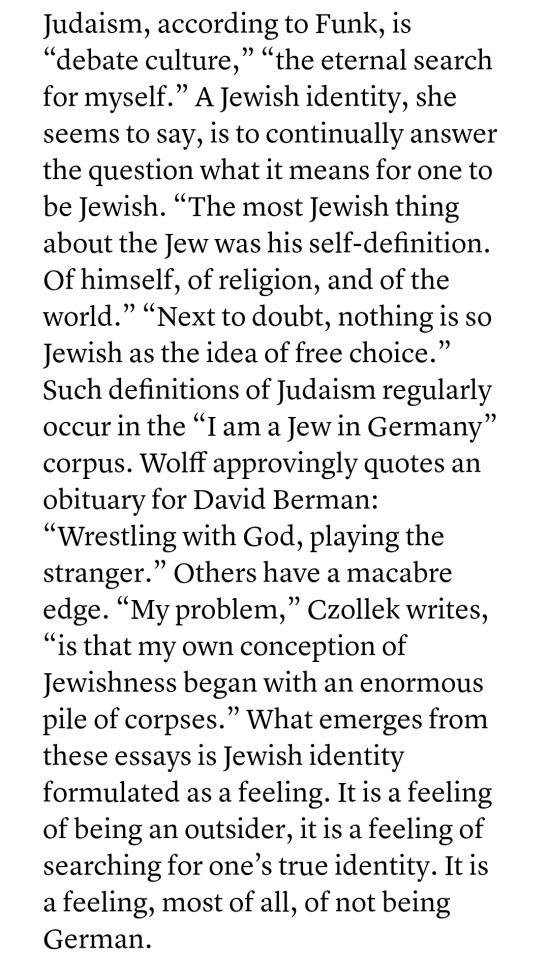
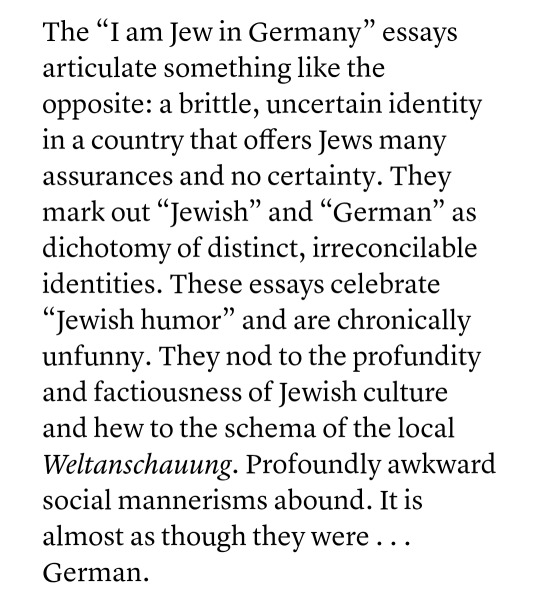
#German memory culture is so fascinating#Also to some extent french#My mother often claimed that we had Jewish ancestry and that a great-grandmother of mine was Jewish#Turns out she'd based that on ''Women talking a weird language'' coming to visit her grandmother#anyway after a whole round of genealogical research we learned that i actually have an Austria-Hungarian great-great-great#grandfather#that is; my great-grandma was talking her mother's home language with cousins that were from three towns over#and they spoke very bad Serbo-Croatian amongst themselves and often just switched to french#but my mother constructed in her mind this whole thing about us being part Jewish and she used to be fascinated by#Woody Allen Roman Polanski Claude Lanzmann the Marx Brothers Jewish humor etc.....#(My mother also spent six months in Germany as a teen during student exchange. i blame them)#But yeah this idea that since i'm neurotic and i had a big nose i was somehow secretly Jewish was drilled into me#She also thought that since my grandpa is Andalusian he probably had some Sephardic blood#Which. What exactly is supposed to be meant here by blood ??? Völk ? Blut ? one-drop rule ??????????#anyway this brand of philosemitism is becoming more and more repulsive to me#Jews are not an enlightened scholar-priest-stand-up-comedian caste with magical blood. They're an imagined community#Same as every other nation; religion; family; culture. Like everybody else they are as good or bad or interesting as imagination allows#And if we have to do weird philo-ism of an outgroup devoid of content let us do what writers have done for 500 years and#Write about talking animals#I'd rather we all collectively hallucinate the houyhnhnms as the quirky fun minority rather than cast real people in that role#or the pigs Napoleon was part of or whatever
22 notes
·
View notes
Text
! DONT FORGET !
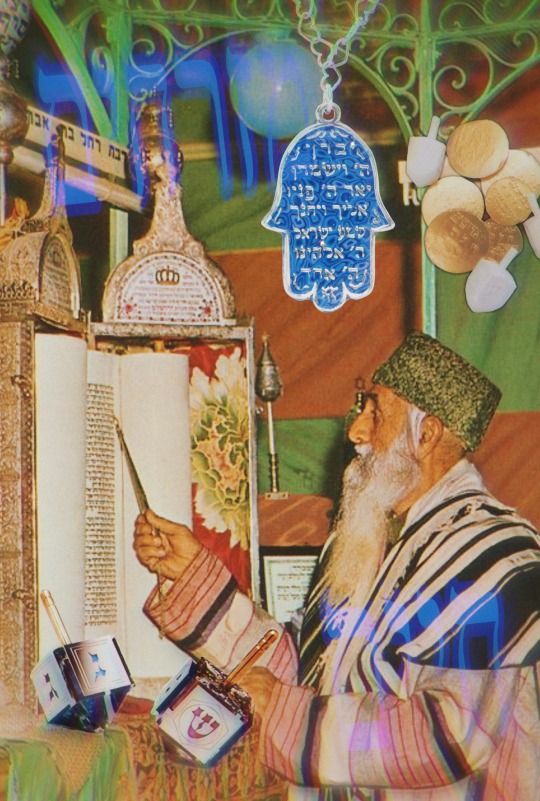
(Postcard of Mizrahi reading the Torah. Cant find much else)
Not all Jews are Ashkenazi so DONT TREAT US LIKE WE ARE!
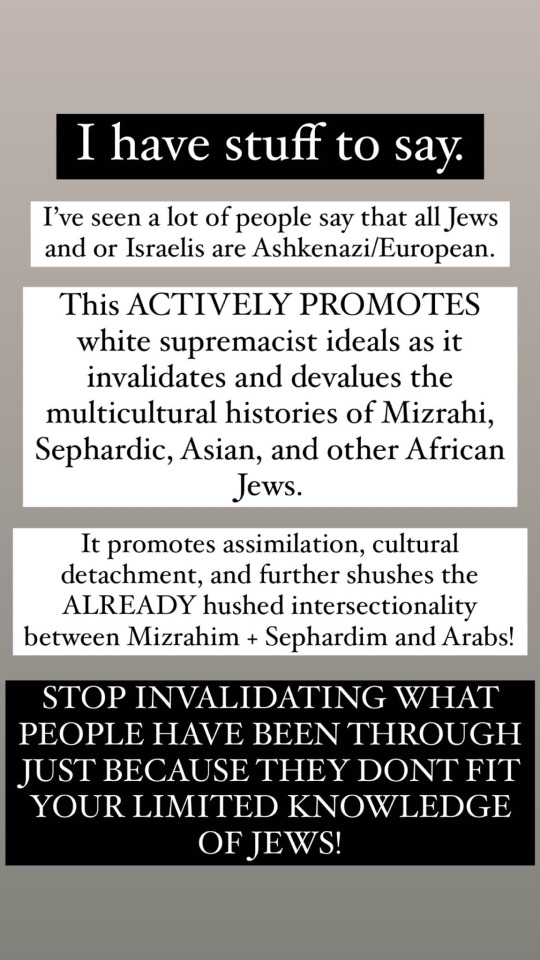

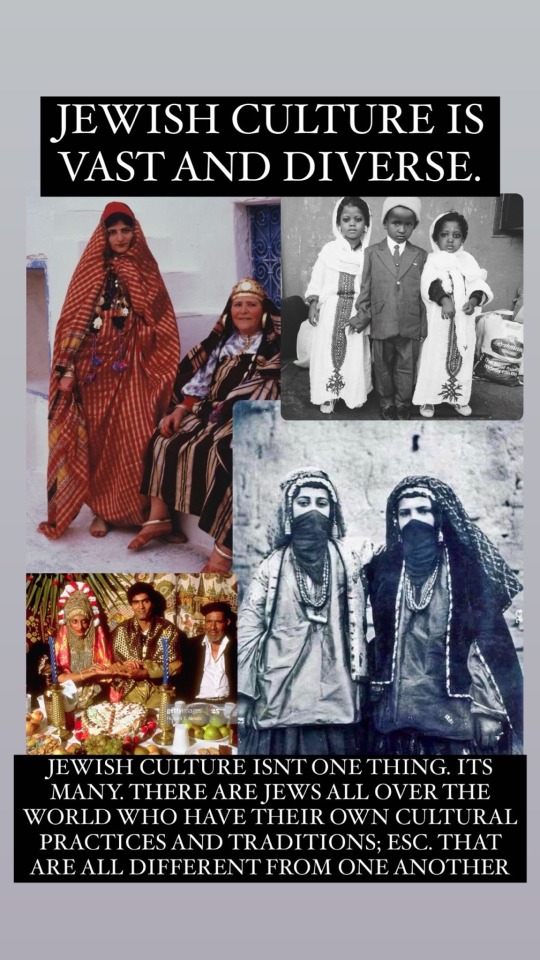
! DONT FORGET !
! WE ARE JEWISH TOO !
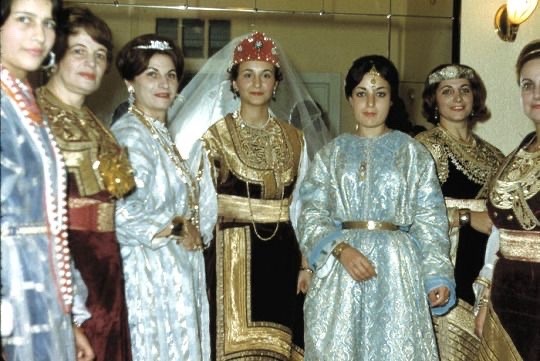
(Moroccan Jews at a henna party wearing Kaftans and Berberisca. The Berberisca dress; or ‘Keswa El Kbria’ is a Moroccan Jewish wedding dress.)
#jewish#jewish culture#mizrahi jews#mizrahim#mizrahi culture#arab jews#sephardic#sephardi jewish#sephardim#Sephardi culture#Berberisca#kaftan#arabic#hebrew#jews#jew stuff#queer jews#jews of color#morocco#moroccan jews#ethiopian jews#maghreb#jewish diaspora#diaspora#israel
64 notes
·
View notes
Text
in retrospective, a really weird thing about the sparrow were the not infrequent moments of diagnosing ancestry back centuries from looking at a face, as if that's normal, achievable or even a regular thought process. very weird almost mystical phrenology going on there ngl
#.text#like there's this moment where anne edwards is like oh yeah sofia has a sephardic jew face. like girl? you okay?#personally that was a really usamerican kind of concern tbh. like surely there are better ways to expand on cultural heritage#but no. Measuring Skull time
15 notes
·
View notes
Photo

my oc dara drawn at lightning speed!
#i love all jewish culture but especially sephardic so here is obviously an oc!!#ke haber???#he is sephardic jewish from amsterdam so he's jewish... portuguese... dutch#he has a short temper and he's sephardic so he's a fiery LADINO ahahah *gets removed from the premises*#no but he's moody because he is 14. but he grows!!!#my art#original character#he's actually a suuuper old character of mine. his design has not changed a bit
69 notes
·
View notes
Text




From right to left: Beya Melamed; Bulgaria, 1890 - Jewish bride after the wedding; Turkey, early 20th century - Torah ark curtain made from a woman’s dress; Izmir, Turkey, 1929 - Wedding dress belonging to a Jewish family from Edirne, Turkey; early 20th century, gifted to museum exhibition in memory of Colombe Papo
Worn in the 19th and 20th century for weddings and other occasions by women across the Balkans and Anatolia, bindallı dresses were typically made of velvet in deep jewel tones. They were decorated with extensive gold embroidery of floral designs, which give this group of dresses their name, meaning thousand branches. This Ottoman-derived yet European-influenced style marked a transitional period between uses of traditional and modern western fashions.
The dresses - adopted from the surrounding culture as a fashionable item without any Jewish specificity - took on unique Jewish meaning through their use in the synagogue, where they became ark curtains, Torah mantles and binders, bimah covers, and the like, frequently with added dedicatory inscription. The donation of dresses and trousseau items by women to the synagogues created a personal bond between the women and the synagogue. The habit of donating these textiles to the synagogue endured long after the original embroidered bedclothes and dresses had gone out of fashion, and the transitional bindallı fashion thus remained alive in Sephardi synagogues long after the passing of the brides who wore the dresses.
#jumblr#jewish#jewish history#jewish culture#sephardic history#sephardic culture#this makes me so emotional tbh - the personal bond between the woman and the synagogue; the way they're kept alive through it;#the way we make our surroundings uniquely and specifically jewishly meaningful. no matter where we are or what it is#I unfortunately couldn't find a name for the bride on the top left which is upsetting bc#I think it's important to provide names whenever you can find them with this sort of thing. I've provided all the details I can find#I'd like to do a regular post like this focusing on culture + contributions + connections + etc of jewish women#and sephardic women specifically because we need more of it#my posts
498 notes
·
View notes
Text
Los sefardíes
Un sefardí es una persona que es un judío de España y Portugal, o un descendiente de esos judíos. Estos judíos vivieron en España y Portugal desde los últimos siglos del Imperio Romano hasta que sufrieron persecución y fueron obligados a abandonar esos países a fines del siglo XV. Los sefardíes inicialmente escaparon al norte de África y otras partes del Imperio Otomano, y muchos luego se establecieron en lugares como Francia, Holanda, Inglaterra, Italia y los Balcanes. Salónica (Tesalónica) en Macedonia y la ciudad de Ámsterdam se convirtieron en centros clave para las comunidades sefardíes. Los sefardíes que se mudaron generalmente conservaron su idioma nativo, el judeo-español (ladino), así como su literatura y costumbres. Se hicieron conocidos por sus contribuciones culturales e intelectuales dentro de las comunidades judías del Mediterráneo y del norte de Europa.
En cuanto a la práctica religiosa, los sefardíes tienen muchas costumbres rituales que son diferentes a las de los asquenazíes (judíos de áreas de habla alemana), pero estas diferencias reflejan variaciones en la tradición, no una división en sectas religiosas. A principios del siglo XXI, de un estimado de 1.5 millones de judíos sefardíes en todo el mundo (que es significativamente menor que la cantidad de asquenazíes), la mayor población estaba en Israel. El gran rabinato de Israel incluye tanto a un gran rabino sefardí como a un gran rabino asquenazí.
El término "sefardíes" a menudo se usa para describir a los judíos del norte de África y otras regiones que no tienen lazos familiares con España pero que han sido influenciados por las tradiciones sefardíes. Sin embargo, el término "mizrahíes" podría ser un nombre más preciso para este grupo.
Britannica, The Editors of Encyclopaedia. "Sephardi". Encyclopedia Britannica, 26 Feb. 2024, https://www.britannica.com/topic/Sephardi. Accessed 3 May 2024.
#judaísmo#judío#judaism#jewish#israel#cultura judía#historia sefardí#judeoespañol#judía#ladino#sephardi#imperio otomano#salónica#tesalónica#macedonia#ámsterdam#migración#migration#sefardíes#sefardí#mizrahíes#norte de áfrica#francia#judíos#jews#jew#jumblr#sephardic#sephardic culture#sephardic jews
24 notes
·
View notes
Note
Being non Ashkenazi in a country that isn’t Israel sucks so badly. I’m Mizrachi-Sephardi (I know it refers to Minhag at its core, but my family’s Israeli so we interpret these things more through a cultural lens), but mostly Mizrachi. The country I live in has barely any Mizrachi or Sephardi Beitei Knesset in it, and there’s also not much of a Jewish culture outside of Ashkenazi stuff. I want to connect to my heritage, but I can’t even go to the place that my Mizrachi side was built up, or we will literally get executed. I’m so tired of everything being so Ashkie centric in the diaspora, obviously there’s nothing wrong with Ashkenazi stuff but I just wish there was more of a movement for non Ashkie Jewish cultures. I don’t know, it just sucks that right now I can’t really feel comfortable in my community
.
13 notes
·
View notes
Text
Escucha, pulida dama, escucha un rato y atiende, que es tu galán el que canta y el que por ty pena y muere.
El que se humilla atu sielo, cuyos finos pinçeles de la primavera hermoza no enmitan con sus claveles.
El que ya, desesperado, abista de tus desdenes, se considera difunto y bibe solo con verte.
Pues sy quieres darme vida, pues que tú la culpa tienes de naser tan hermoza, no me trates de tal suerte.
Allenta con la esperansa aquien rendido se ofrese, que no es justo que se diga el ser las hermozas crueles.
Lo piadoso y lo tirano es bien hecho que se obstente, que no es justo que ninguno y muera por solo el verte.
Que sy llego a mereçer, el que aquesta llama ardiente se mitiguen tus cariños, seré tuyo eternamente.
Y aun que yo meresca poco por lo mucho que mereçes, me servirá de disculpa el rendirme aty obediente.
Dispón de aqueste cautivo tuyo, lo que tú quizieres, que será gran d[ic]ha mía el hazer lo que tú me ordenes.
Mándame que mude los montes y que alas fieras sujete, que todo me será fásil no mandando que te dexe.
Y sy fiera determinas no queres corresponderme, en tanto mar de suspiros my esperansa se anegue.
Lleve el mar mis desvaríos, el viento mis ayes lleve, abraze el fuego mis ansias, por que un fuego a otro temple.
Mas ¡ay, qué tan raro insendio! pues sy eres toda de nieve, ny puedo ablandarte un punto ny puedo hazer que me queme.
Ny puedo tan poco dar treguas, my bien, de quererte, por que tus ojos divinos lo disponen de essa suerte.
Pues son imán de las vidas, lazo estrecho sy se advierte con que apriziona el amor poderozo, altivo y fuerte.
Sin que pueda no adorarte aquel que llegare a verte y solo será dichozo quien llegare a mereçerte.
Duélete deste aflixido que sabrá agradeserte con mil rendidas finezas la ventura de esta suerte.
Templa ya los rigurozos flecheros con que das muerte, depón lo humano de parte y aquy lo divido exerçe.
Çesa, my bien, de matarme y da prinçipio a quererme, que sy tú no me das vida, tengo segura la muerte.
Aty de mesma apelo, humilde, por que sentensies que quien busca lo seleste es justo hallar lo clemente para que rinda atus plantas los trofeos y laureles con que Cupido, amor niño, çiñe sus invictas sienes.
#Abraham Israel#Poesía Sefardí#Sephardic Poetry#Amor Y Tormento#Love And Torment#Amor No Correspondido#Unrequited Love#Literatura Histórica#Historical Literature#Siglo XVIII#18th Century#Idioma Ladino#Ladino Language#Herencia Cultural#Cultural Heritage#Cultura Sefardí#Sephardic Culture#Expresión Poética#Poetic Expression#sephardic#sefardí#poesía#ladino#judeoespañol#sephardi jewish#sephardim#poema#escritos
1 note
·
View note
Text
How beautiful is the Ladino ✡️ language! I read this song is common at Sephardi weddings, but this version gives it such an enchanting ethereal vibe to it. I can't stop playing this track on Spotify, my new song fixation of the week.
#jumblr#jewish#jews#nesyapost#jewish culture#jewish history#Jewish music#ladino#sephardim#sephardic#sephardi#morenika#judeo spanish#audhd moment where I'm convinced I'm gonna learn this and sound just as good when we know i won't#Spotify
72 notes
·
View notes
Text
Karaites are not a were (there are probably around 50,000 of them today), and they aren't biblical literalists. Karaites still interpret the Torah. They do not try to read the most obvious meaning out of it (which is still interpretation), they try to read what would have been obvious in Antiquity (which is also interpretation). Community leaders may often be Ḥakhamim (scholars) who are consulted regarding the Torah, and in the past compiled volumes of different interpretations (most have been lost). However, the only exaltation they have, to my understanding, is as scholars, filling an advising role. Every Jew in Karaite Judaism is encouraged to study the Torah and interpret it. All interpretations are held to the same scrutiny. The interpretations I've read from Karaites can be very satisfyingly logical (such as the "Tekhelet is woad" argument).
They reject that the Talmud is equal to or above the Torah, and I've seen a few different opinions from Karaites about what that means. One person I've bumped into said you shouldn't consult the Talmud at all, but the stance on the official site for American Karaites is as follows: "Rejection of the authority of the Talmud does not mean that the Karaites consider it unlawful to consult it or to rely on it; it means only that they deny its heavenly origin and regard it as an original work of the Sages in interpretation of the written Torah, and therefore subject to the shortcomings inherent in any handiwork of mortal men uninspired by heaven." Not to be controversial or anything, but I agree with them on that point. Further, that which directly contradicts the Torah is to be discarded as a custom, which is a contention with some Talmudic interpretations.
The rejection of the Talmud wasn't done for shits and giggles- it was likely a political choice reacting to the introduction of Islam, or in reaction to the consolidation of power among rabbis and how difficult the Talmud and additional interpretations risked becoming to learn, preserve, and transmit. There's a reason Sa'adiah Gaon was praised because “Were it not for Sa’adiah, the Torah might have disappeared from the midst of Israel", and it is notable that he was also a major opponent of Karaites. We don't actually know, because figuring out the beginning of Karaite Judaism is hard- some say it was a dispute over the Exilarch position (which Karaites say is made up, and some contemporary sources lack mention of), we have a document from 641 (i.e. the previous century) mentioning Karaites in Egypt, some think they were connected to Philo, others to some other group. But you don't break off from a major sect of your religion for fun!
Further calling Karaites biblical literalists invites one to think of Christian biblical literalists, which really isn't the case. For example in some ways Karaite women have better protections than Rabbinic women- they can initiate divorces! And if necessary, a court could issue a divorce order by itself. Fundamentalist can be a more accurate term, but still implies something false- Karaites did not arise in reaction to modernism, secularism, liberalism, etc. Most religious scholars will tell you fundamentalism is a modern phenomenon. Karaites are a decidedly, very old community. Further, "fundamentalist", in most cases, is being used as a pejorative for Karaites, not intended as an accurate description. People who don't use eithef of these terms also like to use the word "extremist".
#cipher talk#There are definitely problems inside of Karaite Judaism because every group has problems but the utter lack of curiosity#And self assuredness that a community which has lasted for at least 1300 years and possibly more must be terrible and such entirely#There have been dozens of Jewish sects including ones that existed around the time Karaites start popping up in the historical record#None of them have lasted as long as the Karaites (usually because they were messianic sects and not in the modern sense#In the sense that their leaders claimed to be the Messiah or prophets and often promised to create an independent Jewish state#Or something else similar)#If Karaites were as horrible as how people talk about them people would just do something different like what happened with the other sects#It's a very annoying and kind of despicable attitude whenever I see a Hewish person say this about another culture of Jews#I've seen people say it about Sephardic culture as well as Karaites- you're dead roll over and assimilate to my thing
7 notes
·
View notes